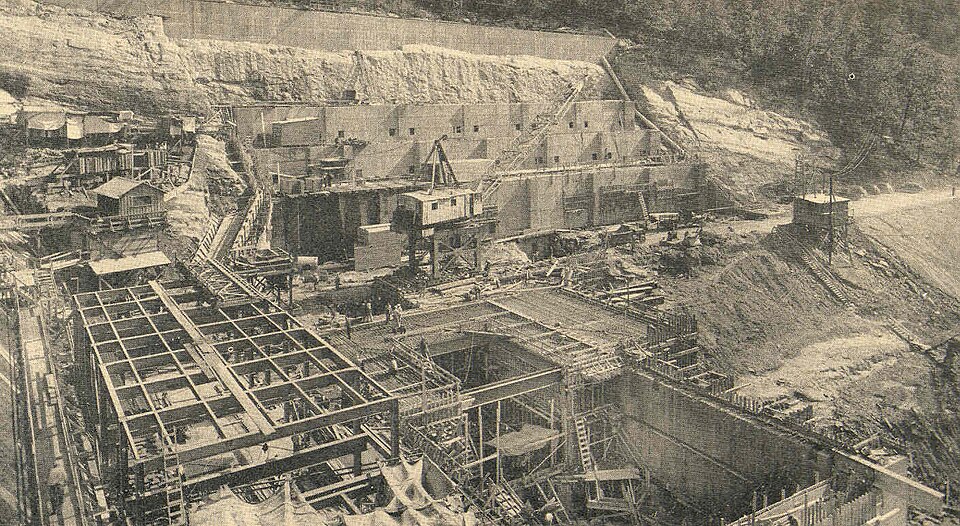Imagine the rolling hills of southeastern Tennessee, where the Hiwassee River meanders through the lush landscape. Nestled in this serene setting stands the Hiwassee Dam, a monumental testament to American resilience and ingenuity during the 20th century. Constructed as part of President Franklin D. Roosevelt’s New Deal, the dam was built by the Tennessee Valley Authority (TVA) as an effort to combat the Great Depression’s crippling effects by providing jobs and improving regional infrastructure.
The story of Hiwassee Dam begins in the late 1930s. The TVA, established in 1933, sought to harness the power of the Tennessee River and its tributaries through a series of dams and power plants, aiming to provide electricity, control floods, and enhance navigation. The Hiwassee Dam, completed in 1940, became one of these pivotal projects. The dam is an impressive feat of engineering, standing over 300 feet tall and stretching more than a thousand feet across the river. It is a concrete gravity dam, meaning its massive weight alone is what holds back the force of the river.
During its construction, the project provided employment to thousands of workers, many of whom had been struggling to find work during the economic downturn. The dam’s creation not only helped lift the local economy but also played a significant role in transforming the Tennessee Valley region. Once completed, it generated substantial hydroelectric power, which fueled industrial growth and modernized rural communities that previously lacked electricity.
The Hiwassee Dam also holds historical significance beyond its economic impact. During World War II, the electricity generated by the TVA dams, including Hiwassee, was crucial in powering the nation’s war efforts. Factories that produced essential wartime materials, such as aluminum for aircraft, relied heavily on the electricity supplied by these dams.
While not as widely recognized as some other TVA projects, Hiwassee Dam has its share of notable moments. The dam has witnessed the evolution of energy production and environmental stewardship over the decades. In recent years, efforts have been made to ensure that the dam continues to operate efficiently while minimizing its ecological footprint.
Today, the Hiwassee Dam stands as a symbol of progress and adaptation, enabling recreational opportunities such as fishing and boating, and supporting local wildlife habitats. It remains a powerful reminder of how strategic infrastructure projects can transform regions and improve lives, an enduring legacy of the New Deal era.


